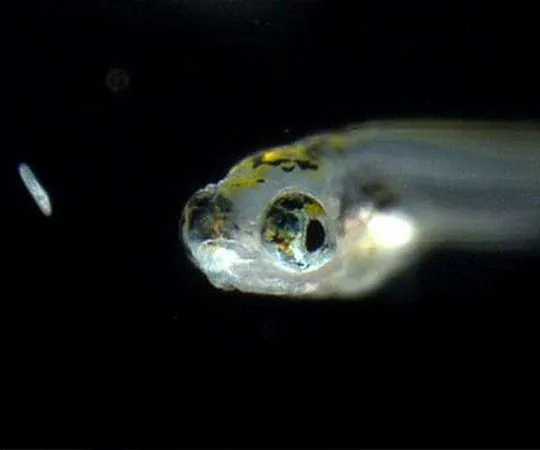
Groundbreaking Zebrafish Experiment on China's Space Station Paves the Way for Future Space Ecosystems
2024-11-17
Author: Rajesh
Introduction
A recent experiment aboard China's space station has achieved something extraordinary: four zebrafish have successfully completed their entire life cycle in space, from growth to reproduction, within just 43 days. This remarkable feat is reported in 'The Innovation' journal and marks a significant milestone in space ecological research.
The Experiment's Launch and Objectives
On April 25, the Shenzhou-18 manned spacecraft launched into orbit, carrying not only three astronauts but also the zebrafish and a small supply of aquatic plants. Following their return on November 4, the astronauts brought back essential water samples from this closed aquatic ecosystem, providing invaluable insights into life in microgravity environments.
Research Collaboration and Ecosystem Design
Researchers from the Institute of Hydrobiology of the Chinese Academy of Sciences (CAS) and the Shanghai Institute of Technical Physics have collaborated closely on this pioneering experiment. The innovative ecosystem utilized photosynthetic aquatic plants to produce oxygen, vital for the zebrafish, while the fish’s waste served as nutrients for the plants. Food for the zebrafish was administered carefully using a syringe, showcasing the meticulous care required in such an intricate, closed-loop system.
Significance of Zebrafish in Research
Zebrafish are particularly advantageous for research due to their genetics—they share over 70% of their DNA with humans and can lay more than 300 eggs at a time. This genetic similarity positions them as excellent candidates for studies into human disease mechanisms and the development of new pharmaceuticals. IHB researcher Wang Gaohong emphasized this point, as zebrafish continue to be pivotal in biomedical research.
Monitoring and Observations During the Mission
Throughout the mission, astronauts monitored the zebrafish closely, noting behavioral changes such as upside-down swimming and looping. These unusual movements are attributed to the effects of microgravity, and understanding these adaptations is crucial for future studies of vertebrates in space.
Future Research Directions
Sun Yonghua from the IHB expressed excitement over the experiment’s successful outcomes, considering it a significant stepping stone for upcoming vertebrate studies and potential applications in space medicine. Future investigations will delve into the stored water samples, which are preserved at ultra-low temperatures to maintain their integrity for analysis.
Conclusion
This pioneering research engages over 500 laboratories across China that are currently focused on zebrafish studies, demonstrating the country's commitment to advancing both space exploration and the scientific understanding of life beyond Earth. As humanity eyes longer missions and potential colonization of other planets, this groundbreaking experiment could very well lay the groundwork for sustaining life in extraterrestrial environments.
Stay Updated!
Stay tuned for more updates on how space research is transforming our understanding of biology and the future of human life in space!



 Brasil (PT)
Brasil (PT)
 Canada (EN)
Canada (EN)
 Chile (ES)
Chile (ES)
 España (ES)
España (ES)
 France (FR)
France (FR)
 Hong Kong (EN)
Hong Kong (EN)
 Italia (IT)
Italia (IT)
 日本 (JA)
日本 (JA)
 Magyarország (HU)
Magyarország (HU)
 Norge (NO)
Norge (NO)
 Polska (PL)
Polska (PL)
 Schweiz (DE)
Schweiz (DE)
 Singapore (EN)
Singapore (EN)
 Sverige (SV)
Sverige (SV)
 Suomi (FI)
Suomi (FI)
 Türkiye (TR)
Türkiye (TR)